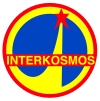Bulgaria 1300
This article relies largely or entirely on a single source. (March 2014) |
| Mission type | Science |
|---|---|
| Operator | BSA |
| COSPAR ID | 1981-075A |
| SATCAT no. | 12645 |
| Spacecraft properties | |
| Manufacturer | BAC BAS SSA[citation needed] |
| Launch mass | 1,500 kilograms (3,300 lb) |
| Start of mission | |
| Launch date | 7 August 1981, 13:35 UTC |
| Rocket | Vostok-2M |
| Launch site | Plesetsk 43/3 |
| Orbital parameters | |
| Reference system | Geocentric |
| Regime | Low Earth |
| Perigee altitude | 825 kilometres (513 mi) |
| Apogee altitude | 906 kilometres (563 mi) |
| Inclination | 81.2 degrees |
| Period | 101.6 |
Interkosmos 22, more commonly known as Bulgaria 1300 (Template:Lang-bg), was Bulgaria's first artificial satellite. It was named after the 1300th anniversary of the foundation of the Bulgarian state.
Description
The satellite was developed by the Bulgarian Space Agency around the "Meteor" bus, provided by the Soviet Union as part of the Interkosmos program. Assembly took place in Bulgaria, and the spacecraft was launched from Plesetsk in 13:35 local time on 7 August 1981. During that same year the Bulgarian government organized a massive celebration to commemorate the 1300th anniversary of the country's founding. Interkosmos 22 was successfully inserted in a near-polar orbit. The outer skin of the spacecraft, including the solar panels, is coated with a conducting material in order to allow the proper measurement of electric fields and low energy plasma. Power is provided by the two solar panels, which generate 2 kW of electricity. A rechargeable battery pack is used as an energy supply when the spacecraft is in an eclipse period. Gathered data is stored on two tape recorders, each with a capacity of 60 megabits. The main transmitter radiates 10 W in the 130-MHz band. No operational limit was planned. As of 2009, the satellite is operational and still on BSA's list of active programs, and provides data about the extraterrestrial environment over Earth's polar regions.[1]
Equipment
The satellite contains a large set of scientific devices, designed and built in Bulgaria:

- Ion Drift Meter combined with a Retarding Potential Analyzer;
- Spherical Electrostatic Ion Trap (SEIT);
- Cylindrical Langmuir probe;
- Double spherical electron temperature probes;
- Low-Energy Electron-Proton Electrostatic Analyzer Array in 3 orthogonal directions
- Ion Energy-Mass Composition Analyzers
- Wavelength Scanning UV Photometer
- Proton Solid-State Telescope
- Visible Airglow Photometers
- Triaxial Spherical Vector Electric Field Probes
- Triaxial Fluxgate Magnetometer
See also
References
- ^ List of active programs of the Bulgarian Space Agency Archived March 4, 2010, at the Wayback Machine
External links
- Interkosmos 22 (Bulgaria 1300), skyrocket.de
- kosmo

